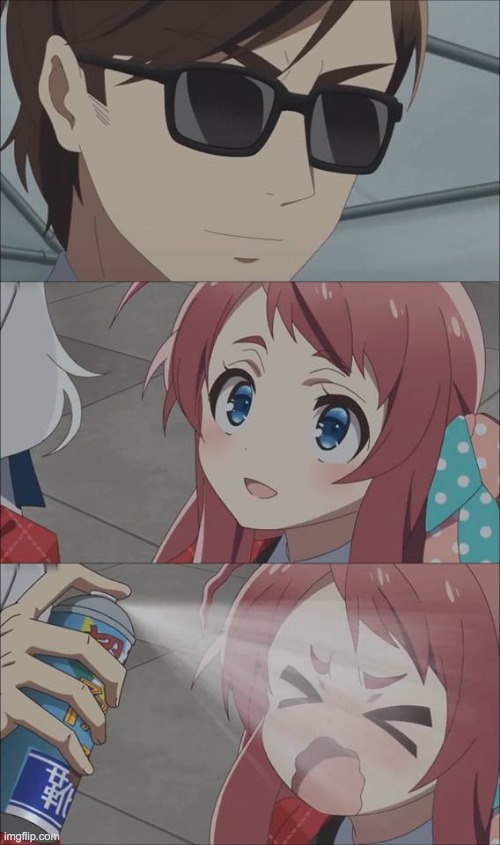I have a real simple solution that involves not windows
i use a different drive for my windows installation because that happened to often,
and i swear it once managed to wipe the bootloader on the linux drive.i have no idea how it did that,
but i avoided starting windows using the grub entry since then.Having two drives is sometimes not enough, either. I have no idea why, but anytime Windows installs for the first time or goes through a major update (not the small security patches, but the periodic feature releases) there’s a random D20 dice throw to determine if it will randomly decide to create the bootloader and recovery partitions in another drive, even though your main installation isn’t there.
I kid you not, Windows 10 once decided that my external SSD enclosure was the best place to put the bootloader.
This happened to me! Did an update, unplugged my eSATA and BAM! Can’t find bootloader. I literally, physically facepalmed when I realized what happened. At least the old one still worked from the primary.
I’ve done a ton of Linux updates and this has never happened to me once (yet).
Picture this: you buy a car. You buy a new set of wheels/rims and a new radio system with Android and whatever. You also put some new carpets on the floor of the car. Now you need to take it for a simple routine maintenance and checkup at the car brand official shop. After a few hours you go back there to pick you car up and it has the stock wheels, stock radio, stock carpets and everything and you ask where the hell is your stuff and ALL of them on the shop look at you confused like if they never seen any different accessory on that car before other than the stock ones, or don’t know what you are talking about. All they know is that the car is now “according to spec”.
This is what it feels like after updating Windows with Linux in dual-boot on the same drive.
I swear at this point Windows users are collectively victims of Stockholm syndrome.
Yes, someone please come free us! I am being held hostage by Windows and Autodesk Inventor.
It’s the usual problem: if your employer IT refuses to budge, you get locked into a Windows (or Apple) ecosystem. I had the same. My solution was to remove myself from corporate IT, and use my own device.
I use workarounds for the interfaces with corporate:
- MS Teams Linux client (sadly discontinued as of 2022) still works out of a jail, but the browser solution is also tested and ready as backup should I be forced
- Webmail instead of a proper mail proram - that’s a big trade-off, but I can work with it, as much as it sucks
- Webex for conferencing (as it works properly with Firefox, contrary to many other solutions)
- Web portals continue to work - even though sometimes I need a user agent switcher to pretend I am using chrome (fuck you @MS Teams)
There’s mail apps for Linux. I think thunderbird is most popular.
My point was about corporate IT refusing to provide a mail server to the outside world.
So no IMAP/POP3 server or what do you mean? If so how does the web app work?
Webapp probably uses Exchange services internally and exposes only a web interface to the internet
Ah, I suppose that makes sense.
If I dual boot windows, I tend to disconnect my Linux drive any time I do anything on the Windows side. Even installing Windows fresh using default settings, it managed to completely erase my Linux disk to put the Windows bootloader on it even though I selected a completely different disk for the Windows OS. Won’t be making that mistake again. And by mistake I mean dual booting Windows. That pile of spaghetti code gets a VM.
windows installing its bootloader on a completely separate drive is such a weird and fucking idiotic issue for it to have.
Pfft, even 2 separate ssds for dual booting doesnt stop this from happening to me -___-
On the plus side, this is the first i recall hearing of someone encountering the same issue, so i guess i dont feel as alone now.
Is that actually easily fixable? Was planning to go dual-boot soon on my laptop and haven’t even considered this scenario.
Windows actually works better in a vm on Linux than on bare metal. And it’s got a much smaller chance of breaking my PC that way too.
Do you happen to know where it’s from?
Zombieland Saga.
Zombie girls are brought together to make an idol group by a sadistic madman who abuses the shit out of them.
Edit, the scene in question
Remember kids, if you’re gonna dual boot, stay safe, use 2 drives, and pray you’re fast enough to mash the boot menu button when you power on.
It’s at least gotten a bit better.
There was a time when Photoshop and other programs used a copy-protection scheme that overwrote parts of grub, causing the user not to be able to boot Linux or Windows.
They knew about it, and just DGAF. I don’t remember their exact FAQ response, but it was something along the lines of “Photoshop is incompatible with GRUB. Don’t dual boot if you use Photoshop.”
Grub still has code for BIOS based installs that uses reed-solomon error correction at boot time to allow grub to continue to function even if parts of its core.img were clobbered by shitty copy protection schemes for Windows software.
Never trusted this setup to begin with because I didn’t trust Microsoft and I’m not all that capable or want to take time to sort this stuff out on a regular basis.
So I just setup my ThinkPad laptop with two removable SSDs and I just swap one or the other whenever I need. The drive is easily switched, from power down, remove drive, insert other drive and restart only takes about two minutes.
I’m not going to risk messing up my setup because two operating systems can’t work with one another.
Besides I seldom switch, I use Windows if I really have to about three or four times a year.
- install windows
- adjust main partition so you have space for Linux
- install linux, during install create anither efi partition, and root partition.
- linux probes foreign OS (some distros might not) and creates a chainloader entry from your new EFI to Windows EFI
- set BIOS to boot from linux EFI
Windows never knows the other partition exists and leaves it intact.
Could you give me more detail for step 3?
Don’t even have to do that. Install windows first, then install Linux with refind bootloader on preferably a separate disk. Done
I installed arch so that didn’t happen.
Not how it works
Bad post, contains anime
With UEFI it’s waaayyyy less bad than it used to be. There is no more MBR in the traditional sense for windows to clobber. Windows and Linux can share an UEFI boot partition both dropping in their appropriate boot binaries.
Even if you install Linux and Windows on separate devices, unless you do something strange they will share the same UEFI boot partition.
Man, when I first messed around with Linux I hosed the MBR more times than I can remember. Either through Windows smashing it with an update, or my dumb ass doing stupid shit in gparted.
Pretty sure I was able to recover the important files somehow, but my parents banished me to the old family desktop for that pretty quick.
Me too. Lol. It was almost a right of passage for people at the time.
I have power switches for my drives. If I want to boot into windows, I turn that one on and the others off.
how do you do that ? physical switches ? do you buy them separately and solder them ? where ?









